Yellow Birch - Betula alleghaniensis
Our largest Birch species, the shade tolerant Yellow Birch plays an important role in Ontario’s hardwood lumber industry. The twigs and leaves give off the smell of wintergreen when rubbed, and are often used to make tea. Yellow Birch sap is also commonly boiled down in spring to make a dark syrup, or fermented to make beer. The yellowish-brown bark peels away in small, papery curls. The Yellow Birch is most commonly found on rich, moist soils and is often found with beech, basswood and conifers such as balsam fir and white pine. Many animals eat the saplings and seeds of the yellow Birch, and it is a favourite food source of the yellow-bellied sapsucker.
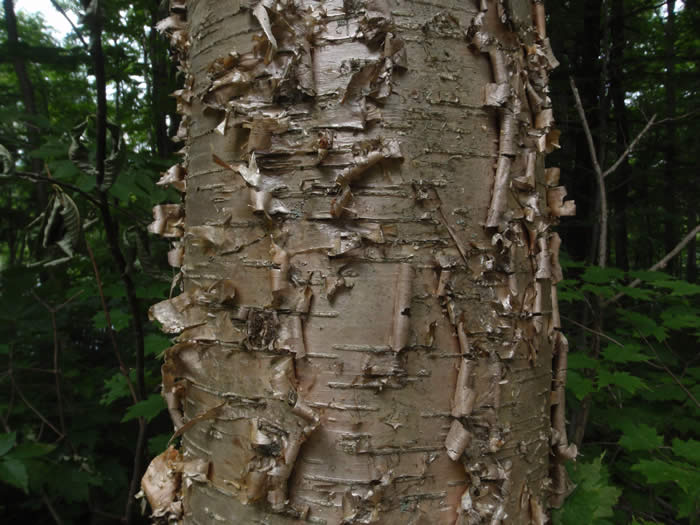
The mature, yellowish bark gives this species its name. It pulls away from the trunk in tight, horizontal strips, but does not peel as easily as paper Birch. It is important to never remove the bark from a live tree, as this can disfigure or even kill it. Photo by Chris Earley.
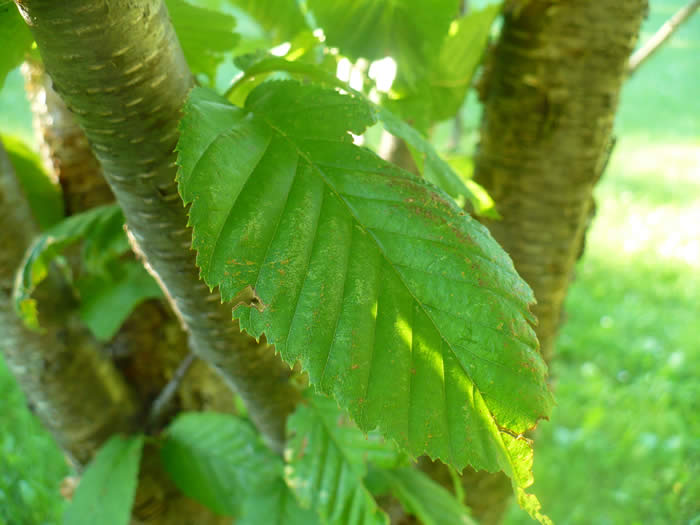
Yellow Birch leaves are alternate and triangular to oval, with a fine serrated edge. They turn yellow in the fall. Yellow Birch leaves have parallel veins, usually numbering in 9 or more per side and each end in a large tooth. Photo by Chris Earley.
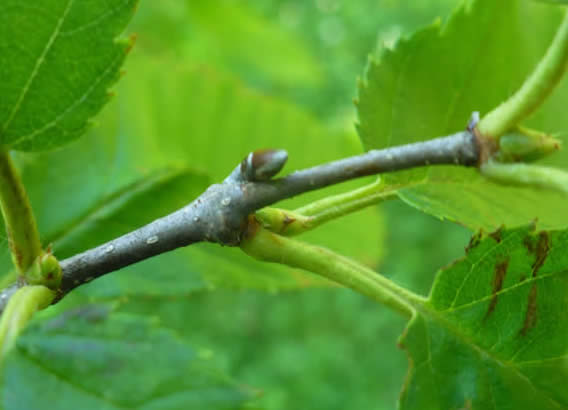
Buds of the Yellow Birch are hairy and sharply pointed and are coloured with two different shades of brown. The twigs are slender, slightly hairy and brown. They give off a wintergreen flavour when chewed. Photo by Sean Fox.
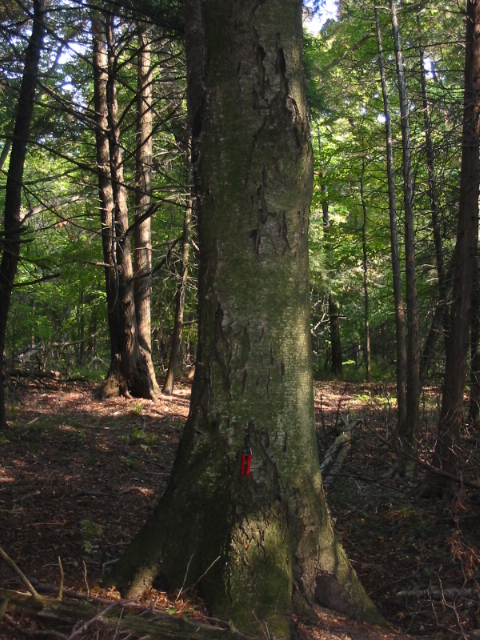
The Yellow Birch grows 25 m in height, 60 cm in diameter and 150 years old and sometimes even older and larger. The trunk has many curves and turns while the branches are wide spreading. Photo by Sean Fox.
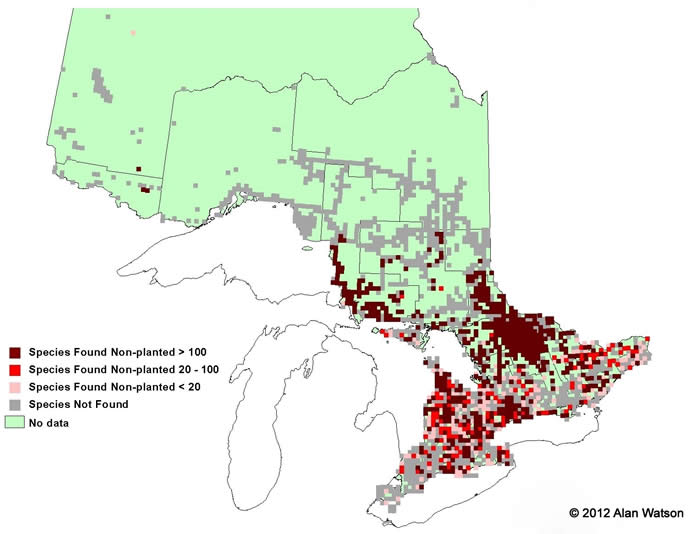
Ontario Tree Atlas map of non-planted Yellow Birch. 1995-1999.
References
Farrar, J.L.. 1995. Trees in Canada. Fitzhenry & Whiteside Ltd. Toronto. ON. 504 pp.
Kershaw, L. 2001. Trees in Ontario: Including tall shrubs. Lone Pine Publishing. Edmonton. AB. 240 pp
Muma, W. 2011. Ontario Trees and Shrubs. [Online] Available: www.ontariotrees.com
OMNR, 2011. Ontario Ministry of Natural Resources: Ontario Tree Atlas. [Online] Available: http://www.mnr.gov.on.ca/en/Business/ClimateChange/2ColumnSubPage/267027.html
OMNR, 2008. Ontario’s Biodiversity: Species at Risk.